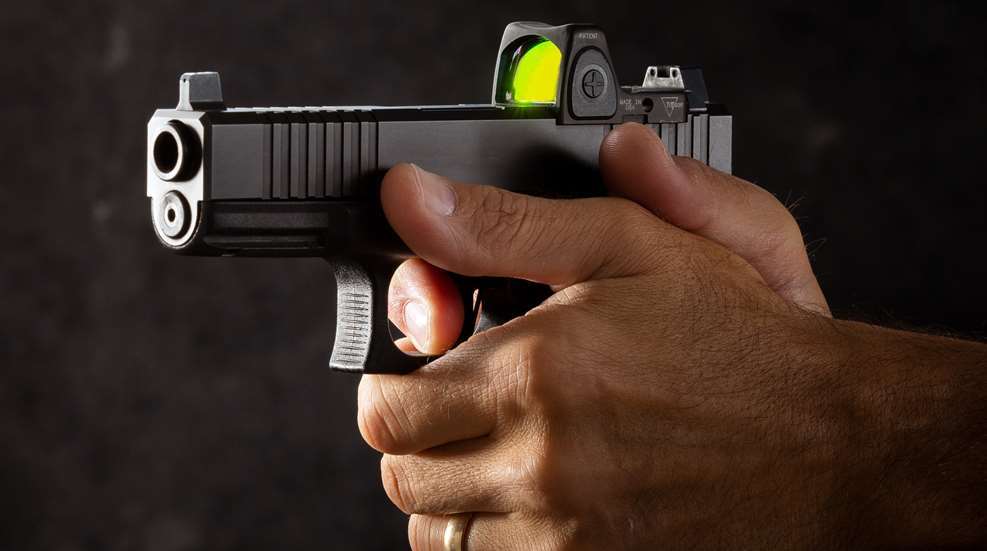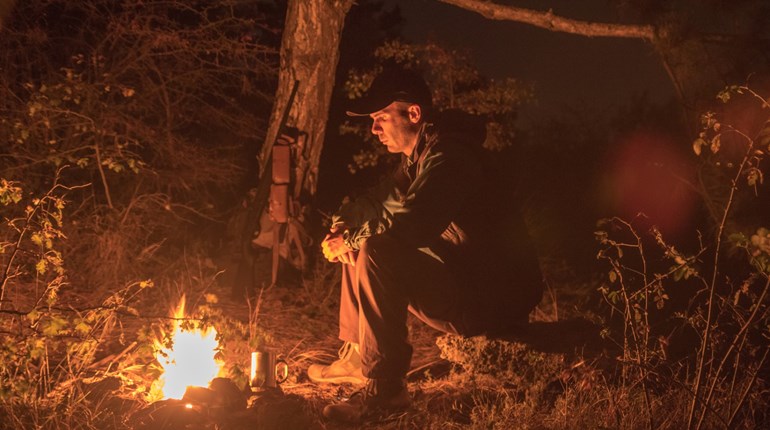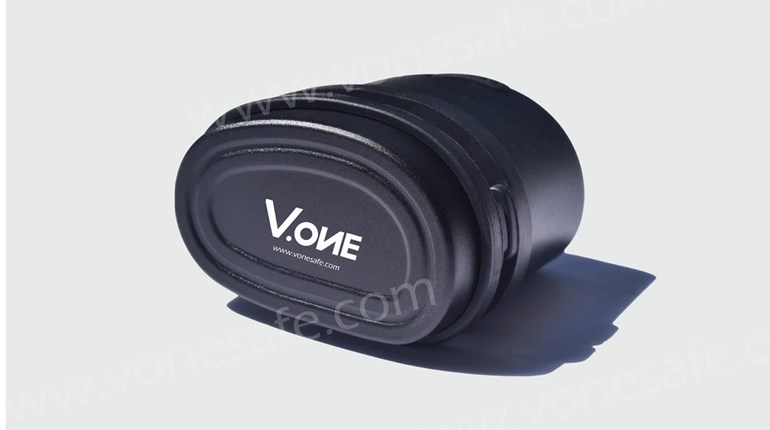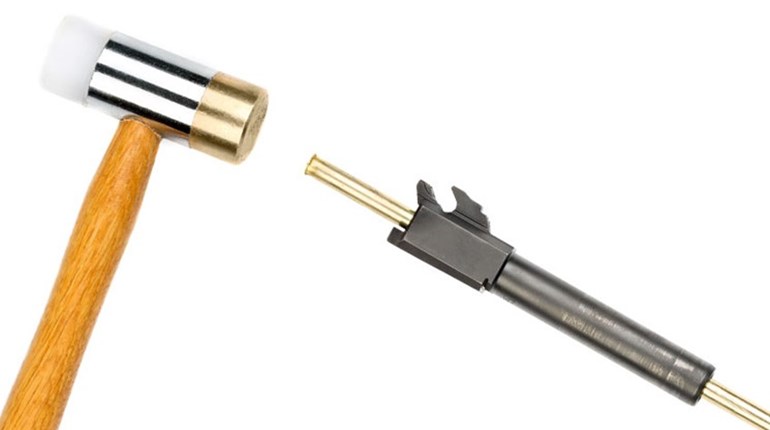
Think you can’t compete in pistol competitions with a caliber higher than .22? Think again! This article is about how to develop your grip to shoot a heavy-recoiling pistol like a .45, with less felt recoil. Understanding how to grip a pistol will make your road to success shorter, smoother and more enjoyable. There are many ways that will lead to success. The grip we’ll cover in this article is not the only way to grip a pistol, but has proven to accomplish the following three things:
1. Correctly places the trigger finger on the trigger to support perfect sight alignment when the pistol goes off;
2. Achieves natural alignment of the sights to the eye (grip alignment);
3. Reduces the sliding of pistol in the hand when shooting a heavy-recoiling pistol.
The size of your hand and the size of the pistol grip are major factors in developing that perfect grip. This article is for pistol shooting with stock flat-sided grips. You can buy special grips to help you consistently position the pistol in your hand, but understanding the basic principles of how to grip a pistol may be all you need to reach your goal.
To establish your grip you must first follow Safe Gun Handling Rule #1: ALWAYS keep the gun pointed in safe direction. Think of the muzzle of the pistol as your pivot point. You pivot around the muzzle of the pistol, not the muzzle around you. You will physically turn your body as you establish your grip. You hold the pistol in your non-shooting hand by the barrel behind the muzzle, always keeping the muzzle of the pistol pointed straight downrange.
You now place the Y formed between the thumb and trigger finger of your shooting hand as high as you can against the backstrap. The purpose is to have the hand high on the backstrap to reduce the muzzle whip by obtaining support from the hand closer to the center of the bore of the barrel. Next slide your hand around to the side of the pistol to where your thumb and palm join. (If you do not grip the pistol where the palm and the thumb join, a heavy-recoiling pistol will slide in your hand until it meets the resistance of the thumb. If you have an incredibly strong grip, you might be able to hold it in place.)
Next, close the fingers around the front strap of the pistol, starting with the middle finger against the trigger guard. Grip with your lower three fingers and keep the pressure constant. If you loosen the pressure on your grip, the pistol may shift in your hand, which will affect grip alignment and trigger placement. (The loosening of the fingers on the grip and re-gripping without totally re-establishing the grip is referred to as “milking the grip.”) If you grip with your thumb, that pressure must also be constant for every shot.
Remember Safe Gun Handling Rule #2? ALWAYS keep your finger off the trigger until ready to shoot. A recreational shooter obtains his or her grip with the trigger finger straight and outside the trigger guard. An NRA conventional pistol shooter obtains their grip with their trigger finger inside the trigger guard. Depending on your hand size and the size of the pistol’s grip, your three knuckles should be down the middle of the pistol’s front strap. The backstrap is against the fold of the hand where the thumb and the palm of the hand come together. Now raise the pistol while keeping your wrist in a natural position, as when you extend your hand to shake hands with someone. The front sight should be in the middle of the rear sight, giving you perfect sight alignment. This is called grip alignment.
Correct grip alignment naturally aligns the sight to your eye without having to turn your wrist. If you do not have grip alignment, adjust the pistol in your hand and check again until you have it correct. Grip alignment speeds up the shot process in both slow fire and sustained fire, because you do not have to move the wrist around to realign sights between shots.
How hard do you grip the pistol? You have to grip the pistol tightly enough so that when you move your finger, only the trigger moves—not the pistol in your hand. However, you don’t want to grip so tightly that you shake or transmit movement to the pistol when you pull the trigger.
To demonstrate this point try this: Press your thumb into the “Y” between your thumb and trigger finger. Now move your trigger finger as if you are pulling the trigger. You will feel movement of the muscles in the “Y” of your hand. Another area to check for movement is the base of the trigger finger. Again, press with the index finger of your non-shooting hand on the joint of the trigger finger. You will also have movement there.
How do you ensure you are not under- or over-gripping? By watching your sight alignment when you dry-fire. Before you try that, let’s talk about trigger finger placement. The starting point for the trigger finger is to just let your finger fall naturally all the way in on the trigger. The pad of the trigger finger may be more sensitive, but it requires super-slow trigger pull to keep the sights in alignment.
All that matters is that you have perfect sight alignment when the pistol goes off. So just let your trigger finger fall naturally in on the trigger, which for most people is at the first joint. Now you can test your grip pressure and trigger finger placement by dry-firing if you are shooting one-handed bullseye pistol competition. (Before dry firing, remember: No ammunition is allowed in the dry fire area and always dry fire in a safe direction!)
If you’re not shooting one-handed bullseye, do add more support in the form of your other hand. Remember placing the three knuckles down the front of the pistol grip of your shooting hand? Keeping your fingers away from the muzzle, place the four knuckles of your support hand over top of the three knuckles with index finger tight up against the trigger guard and with the thumb of your support hand fitting naturally into the gap between the thumb and fingers of your shooting hand. The thumb of your support hand is parallel to the barrel of the pistol, pointed straight forward towards the target.
The thumb forward position helps manage recoil by having the support closer to the center of the barrel. The gripping pressure of your support hand is about 60 percent of the total gripping pressure. Gripping tight with the support hand will keep you from over-gripping with the shooting hand. Now test your grip and trigger finger placement by dry-firing. Squeeze, push or pull the trigger slowly and steadily as you would squeeze a single drop of water out of an eye dropper. What you are looking for is for the front sight to be centered in the rear sight and stay there when the pistol goes click! Dry-fire several times.
If the front sight is moving, there are two causes: squeezing the trigger too fast or incorrect trigger-finger placement. If you are truly watching the front sight, you will see that the front sight moves in the rear sight notch and you will know whether you pulled the trigger too fast or your trigger finger was not correctly in position and you misaligned the front sight.
In both cases you first move the finger in or out of the trigger and dry-fire a few more times to evaluate. Once you find that magic spot on your finger, your group size will shrink and your scores will increase. One last point: If you are shooting multiple shots quickly, place your finger on the trigger where you have perfect sight alignment every time the pistol goes off for the speed you are shooting.






































